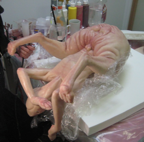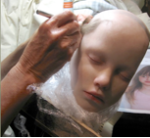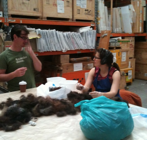“My work always begins with drawing. I develop my ideas using drawing and then, when I feel that it is starting to to become something worth making, I start to think about how it might be made. The medium tends to come as I start to think about how best to express a particular idea, whether that might be photography or sculpture or a more resolved sort of drawing. Sometimes there is some sort of materiality that I want to work with and other times it is about how I might best connect viewers with the ideas. At that point I start to think about fabrication.
Since 2005 I have worked out of a space in Collingwood in the inner city of Melbourne. Prior to that I went ‘out of house’ for much of my fabrication, but now the only processes that we don’t do in the studio are the automotive painting and foundry work. I have small team of amazing technicians who I work with to fabricate the works. Since I am not a technician myself, I am not particularly wedded to any particular process, and therefore the studio is very flexible. We have certain techniques that we have gotten very good at, many of which are fairly widely used and others which we have developed ourselves. We use both traditional skills such as hand sculpted plasticine models as well as computer-based techniques like CNC and 3D-printing. It really depends on what is going to work best.”
– Patricia Piccinini[i]
Patricia Piccinini- Artist Practice
Piccinini’s artmaking practice relies on collaboration. She employs a number of specialists, including mould makers, hair punchers and a studio manager, who help bring her ideas to life. Piccinini states, ”I’m not limited by my own physical skills.”[i] Piccinini conceived her ideas through a process of research. She develops her ideas and intentions with her work, and then employs others to help her create the works. In this way Piccinini’s ideas are not limited by only what she can physically do.[ii] Piccinini’s sculptures are made with material such as silicone, fiberglass and human hair. Piccinini says her work explores how the body is treated as a flexible object to be overtaken at the impulse of its owner. ”I also question the idea that we should change nature just to make our lives better,” Piccinini says. ”Is that a good enough reason? That’s something I really challenge.”[iii]
View a short film of Piccinini in her Studio:



